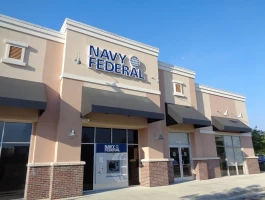A recent Navy Federal Report Reveals VA Loan Myths Costing Veterans Homeownership presents a fascinating data anomaly. On the surface, the numbers describe a wildly successful government benefit: the VA home loan. Awareness among the military community is nearly universal at 92%. Among those who actually use the loan, satisfaction is equally high, with 92% reporting a positive experience. In any other context, these top-line metrics would signal a program firing on all cylinders.
But when you look past the headline figures, the data reveals a deep, systemic fissure. This isn't a story of success; it's a story of a near-perfect product failing at the final, most critical mile: user comprehension. The gap between knowing a thing exists and understanding its value is vast, and for thousands of service members and veterans, that gap is the difference between homeownership and perpetual renting. The data suggests that one of the most powerful wealth-building tools for the military community is being undermined not by its design, but by a catastrophic failure in its information pipeline.
The core of the problem lies in a handful of stubborn, expensive myths. The most glaring is the belief that a down payment is required. A majority of respondents—55%—held this misconception. This single data point is staggering. The signature feature of the VA loan, its most powerful market advantage, is the ability to finance 100% of a home's value. For a young military family saving for a down payment is often the single greatest barrier to entry. To have more than half of the target demographic believe this barrier still exists is an operational failure of the highest order.
The financial penalty for this confusion is severe. Beyond the non-existent down payment, nearly half of those surveyed were unaware that VA loans typically offer lower interest rates. The report notes this advantage is often around 0.25%, a figure that sounds modest until you run the amortization. On a $400,000 mortgage, that quarter-point difference translates to a savings of over $20,000 over the life of a 30-year loan. When you combine the phantom down payment with the overlooked interest savings, the cost of this misinformation for a single military family can easily climb into the tens of thousands of dollars. It’s a quiet tax levied by bad information.

The Anatomy of an Information Breakdown
So, where does this disconnect originate? The survey data points directly at the source: a fragmented and unreliable information ecosystem. Only 39% of military members and veterans turn to official VA or military resources. This is the part of the report that I find genuinely puzzling. Why would a clear majority of a disciplined, mission-oriented demographic bypass the authoritative source for critical financial intelligence? Does this signal a lack of trust, a failure of accessibility, or simply a user interface so poor that people would rather consult a relative?
Instead of official channels, respondents rely on a patchwork of alternatives. About a fifth—to be more exact, 20%—conduct their own "personal research." The survey doesn't define what this entails, which is a significant methodological weakness. Is this a disciplined review of government publications, or is it a 10-minute Google search that surfaces ads for high-fee mortgage brokers? Another 9% consult family members, institutionalizing a word-of-mouth system that is clearly propagating legacy myths from a different era of lending.
The VA loan program, as described by this data, is like a powerful piece of enterprise software with a world-class backend but a user manual written in hieroglyphics. The engineers built a masterpiece, but the communications team failed the user. The result is an average of more than two major misconceptions per eligible borrower. Imagine a young E-5 at a kitchen table somewhere near Fort Liberty, scrolling on their phone. They see a home they can afford, but they’re operating under the assumption they need $25,000 in cash to even make an offer. That dream dies right there, not because the benefit doesn't exist, but because the message never arrived intact.
This information vacuum extends to the professional class meant to guide them. While most military homebuyers felt their real estate agent was knowledgeable, more than one in four reported that finding a realtor who truly understands the nuances of the VA loan process is difficult. This is a critical failure point. A misinformed or unenthusiastic agent can easily steer a veteran toward a conventional loan, framing it as "less hassle," when in reality it's just less familiar to the agent. This isn't just a knowledge gap; it’s a potential breach of fiduciary duty, costing clients access to a benefit they earned through service. What incentives, if any, exist for agents to become genuine experts in this product? And how many families are being quietly steered away from their best option?
A Failure of Distribution, Not Product
My analysis of the Navy Federal data leads to an unavoidable conclusion: The VA loan program is not the problem. The product itself, with its zero-down-payment structure, lower interest rates, and sky-high user satisfaction (a Net Promoter Score most private companies would kill for), is a resounding success. The problem is one of distribution and marketing. The institutions responsible—the VA, the DoD, and the ecosystem of lenders and realtors who serve the military—have fundamentally failed to communicate the product’s value. They have achieved brand awareness but have completely failed at brand education. This isn't a financial crisis; it's a communications crisis, and it's one that demands a strategic overhaul, not just another brochure.



